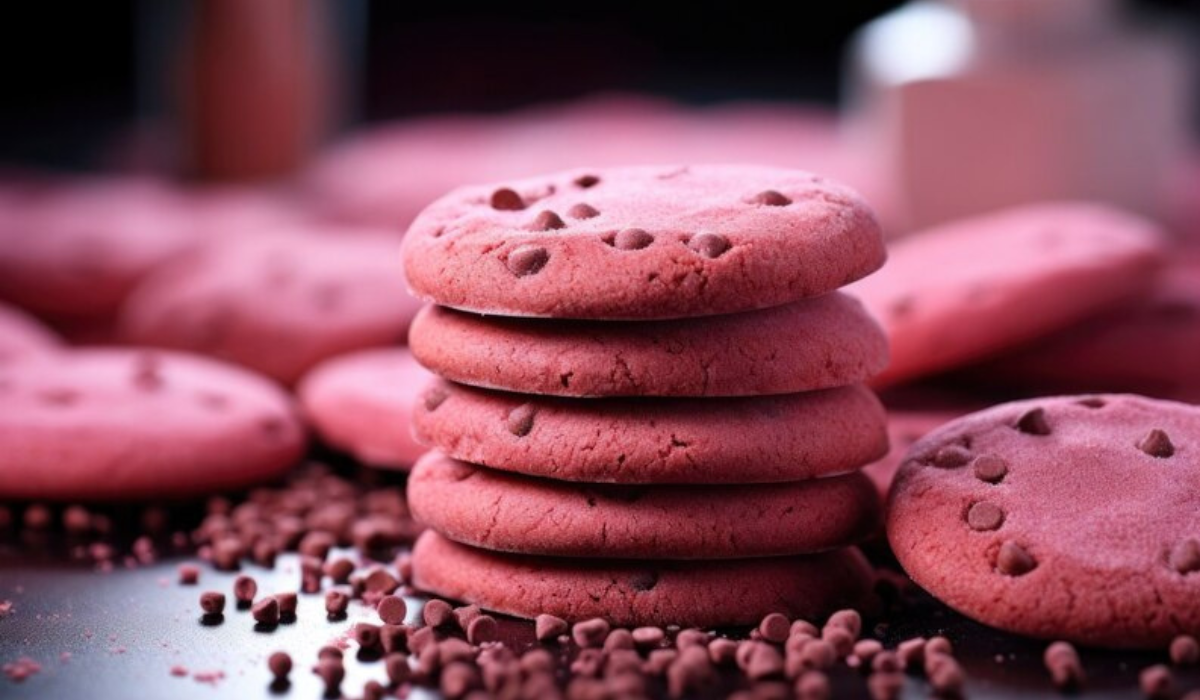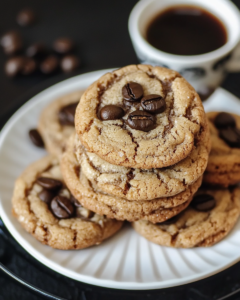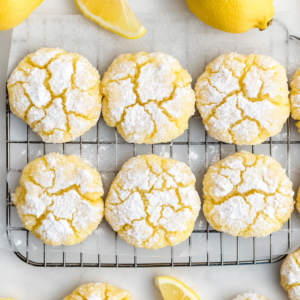Sharing is caring!
Table of Contents
ToggleIntroduction to Mexican Cookies: A Flavorful Journey
Welcome to the delightful world of Mexican cookies, a realm where rich flavors and vibrant traditions merge. These cookies, more than just a sweet treat, embody centuries of history and a tapestry of cultural influences. Each bite takes you on a journey through time and place, offering a glimpse into the heart of Mexican culinary heritage.
The history of Mexican cookies is as layered as their flavors. Rooted in ancient traditions, they evolved through the influence of Spanish conquest and local innovation. Ingredients like corn, chocolate, and native fruits became staples, blending with European techniques to create a unique culinary fusion. This blend of cultures gave rise to a variety of cookies, each telling its own story.
Across Mexico’s diverse regions, these cookies take on different forms and flavors. In the bustling streets of Mexico City, you might find sugary and cinnamon-infused “Polvorones.” Head to Oaxaca, and your taste buds will dance to the rich, chocolatey notes of “Bizcochitos.” In coastal regions, coconut and tropical fruits add a fresh twist, while northern areas favor nuts and caramel. Each region proudly showcases its own specialties, reflecting local ingredients and customs.
As you explore the world of Mexican cookies, you’ll discover a delightful and diverse culinary landscape. Each variety, from simple street snacks to elaborate holiday treats, offers a unique taste experience, steeped in history and regional pride. So, let’s embark on this flavorful journey together, exploring the rich history and popular varieties of Mexican cookies.
Ingredients Commonly Used : A Flavorful Palette
Mexican cookies, celebrated for their rich flavors and delightful textures, owe their uniqueness to a blend of traditional ingredients. These key components not only define the taste but also connect us to Mexico’s culinary heritage.
Flour forms the foundation of most Mexican cookies, providing a versatile base that chefs creatively enhance. It’s often wheat flour, but corn flour also makes a frequent appearance, especially in recipes rooted in pre-Columbian traditions.
Sugar sweetens the deal in Mexican cookies. While white sugar is common, brown sugar, or ‘piloncillo,’ adds a deeper, caramel-like sweetness, enriching the flavor profile. Honey and agave syrup, natural sweeteners, are also popular, especially in recipes calling for a subtle, earthy sweetness.
Butter or lard is essential for that irresistible, melt-in-your-mouth texture. Traditional recipes often favor lard, which imparts a unique richness, but butter is a common substitute, especially in modern variations.
Eggs bind the ingredients, ensuring the cookies hold their shape and texture. They also contribute to the richness, making each bite satisfying and flavorful.
Spices and flavorings are where Mexican cookies truly shine. Cinnamon, vanilla, and anise are staples, each adding a distinctive warmth and aroma. Chocolate, both in powder and melted forms, is a beloved addition, paying homage to Mexico’s deep-rooted chocolate history.
Nuts and seeds, like almonds, pecans, and sesame seeds, add a delightful crunch and nuttiness. They’re often used as toppings or integrated into the dough for an added layer of texture and flavor.
Lastly, fruits, both fresh and dried, bring a natural sweetness and tartness. Lime zest, coconut, and raisins are just a few examples that enhance the flavor palette of Mexican cookies.
In summary, the ingredients used in Mexican cookies are a testament to Mexico’s rich culinary traditions, blending simplicity with depth, and tradition with innovation. Each component plays a crucial role in creating the delightful experience that these cookies are known for.
The Art of Baking : A Blend of Tradition and Technique
Baking Mexican cookies is an art that combines age-old traditions with skillful techniques. It’s an experience filled with rich aromas, vibrant flavors, and the joy of creating something truly special. Whether you’re a seasoned baker or a novice, the process of making these delightful treats offers a rewarding journey into the heart of Mexican culinary culture.
First, selecting quality ingredients is crucial. Freshness in spices like cinnamon and vanilla, and quality in butter or lard, sets the foundation for flavorful cookies. Mexican cookie recipes often call for piloncillo, a type of unrefined sugar, which adds a unique depth and richness.
The mixing process is where the magic begins. Creaming butter or lard with sugar until light and fluffy ensures that your cookies will have the perfect texture. Gradually adding in the eggs and dry ingredients, like flour and spices, forms a dough that’s both pliable and flavorful. Traditional recipes sometimes call for a resting period for the dough, allowing the flavors to meld and develop.
Rolling and shaping the dough is a step where creativity shines. Mexican cookies come in various shapes and sizes, from simple rounds to intricate designs representing cultural symbols. This step often turns into a family activity, with each member contributing their artistic touch.
Baking times and temperatures are key to achieving the perfect texture. Mexican cookies range from soft and chewy to crisp and crumbly, and understanding your oven will help you get the desired result. Keep a close eye on your cookies as they bake, as they can go from perfect to overdone in a matter of minutes.
Finally, the finishing touches often include a sprinkle of sugar, a brush of glaze, or a dusting of spices. These final flourishes not only enhance the flavor but also add an appealing aesthetic to your Mexican cookies.
Baking Mexican cookies is more than just following a recipe; it’s an act of love and a celebration of culture. Each step, from mixing to baking, is an opportunity to connect with the rich culinary traditions of Mexico and create something truly delightful.
Celebrating Festivals with Mexican Cookies: A Tradition of Joy and Flavor
Mexican cookies play a starring role in festivals and celebrations, adding sweetness and tradition to every occasion. In Mexico, festivals are vibrant, colorful events where food, especially sweets, holds a special place. Among these, Mexican cookies are not just treats; they’re symbols of joy, community, and heritage.
During the Day of the Dead, or “Día de los Muertos,” families often prepare or share “Pan de Muerto,” a sweet bread that’s more like a cookie, rich in flavors of orange and anise. It’s a way of honoring loved ones who have passed away, blending the sweetness of life with the respect for tradition.
Christmas in Mexico wouldn’t be complete without “Polvorones” or “Mexican Wedding Cookies.” These buttery, nut-filled delights, covered in powdered sugar, are a holiday staple. They’re not only delicious but also a way of spreading festive cheer among family and friends.
In Easter celebrations, “Rosca de Reyes,” though technically a bread, often takes on a cookie-like quality with its sweet, dense texture and decorative candied fruits. It symbolizes the unity and joy of the season, bringing families together in a sweet, shared experience.
Festivals in Mexico are also times for sharing and community, and Mexican cookies are often at the heart of this. They’re made in large batches, meant to be shared with neighbors, friends, and extended family. This sharing is not just a gesture of generosity; it’s a celebration of community bonds and mutual care.
Baking and sharing Mexican cookies during festivals is more than a culinary practice. It’s a way of keeping traditions alive, of connecting generations, and of celebrating the rich tapestry of Mexican culture. Every cookie, from simple sugar-dusted varieties to rich, spice-infused creations, tells a story of history, family, and the joy of coming together.
Mexican Cookies in Modern Cuisine: A Fusion of Tradition and Innovation
Mexican cookies have found a unique place in modern cuisine, blending traditional flavors with contemporary culinary trends. In today’s dynamic food landscape, these classic treats are undergoing a delightful transformation, appealing to a broad spectrum of tastes and preferences.
Chefs and home cooks alike are reimagining Mexican cookies, infusing them with innovative ingredients and techniques. This fusion approach maintains the essence of traditional recipes while embracing modern dietary trends. For example, health-conscious adaptations of classic cookies now feature gluten-free flours, natural sweeteners like agave, and vegan alternatives to butter and eggs.
In upscale dining, Mexican cookies are making appearances as sophisticated dessert components. Imagine a traditional “Polvoron” transformed into a fine crumble, adding texture to elegant plated desserts. Or picture the rich flavor of “Mazapan de Cacahuate,” a peanut-based Mexican treat, reinterpreted as a velvety mousse or tart filling.
Cafes and bistros are also joining the trend, offering Mexican cookies with a twist. You might find matcha-infused “Galletas de Boda” (Mexican Wedding Cookies) or chai-spiced “Galletas de Nuez” (Pecan Cookies), pairing beautifully with specialty coffees and teas.
The global culinary scene has embraced Mexican cookies, integrating them into fusion dishes. For instance, dessert tacos using cookie shells filled with fruit compotes or cream are not just innovative but also a nod to Mexico’s rich culinary heritage.
Mexican cookies are also becoming popular in do-it-yourself baking kits and online cooking classes, reflecting a growing interest in authentic, hands-on culinary experiences. These platforms offer an opportunity to learn about the traditional art of Mexican cookie-making, while also exploring creative, contemporary variations.
In summary, Mexican cookies are transcending their traditional boundaries, finding new expressions in modern cuisine. They retain their cultural essence while evolving to meet contemporary tastes, making them a versatile and beloved component of the global culinary tapestry.
Mexican Cookies Around the World: Spreading Flavor and Culture
Mexican cookies have journeyed far beyond their homeland, capturing hearts and taste buds around the world. This global spread showcases not just their irresistible flavors but also the rich cultural heritage of Mexico. As they travel, these cookies carry with them stories, traditions, and a piece of Mexican soul.
Immigrant communities have been pivotal in introducing Mexican cookies to new regions. Family-run bakeries and local markets in cities across the United States, Europe, and beyond often feature a variety of these sweet treats. From “Conchas,” the shell-shaped pastries, to the cinnamon-kissed “Churros,” these cookies offer a taste of home to Mexican expatriates and a delightful discovery for others.
Food festivals and international culinary events also play a significant role in popularizing Mexican cookies. Here, enthusiasts gather to savor authentic flavors and learn about the diverse culinary traditions of Mexico. These events often feature live baking demonstrations, giving visitors a glimpse into the art of Mexican cookie-making.
The rise of global food blogging and social media has further boosted the popularity of Mexican cookies. Online platforms are awash with recipes, stories, and images of these delightful treats, inspiring a worldwide audience to try their hand at baking them. It’s not uncommon to find a food blogger in Australia or a home cook in Japan sharing their rendition of a classic Mexican cookie recipe.
Moreover, global fusion cuisine has embraced Mexican cookies, incorporating their unique flavors into new, innovative dishes. Chefs around the world are experimenting with these cookies, creating everything from Mexican cookie-inspired desserts to savory dishes garnished with cookie crumbs.
In summary, Mexican cookies have become a global phenomenon, cherished for their flavors and cultural significance. As they travel across continents, they build bridges between cultures, introducing people everywhere to the rich, diverse world of Mexican baking.
Homemade Mexican Cookie Recipes: A Sweet Adventure in Your Kitchen
Delving into homemade Mexican cookie recipes is a delightful culinary adventure, offering a chance to create these sweet treats right in your own kitchen. These recipes, steeped in tradition and flavor, are surprisingly simple to make and incredibly rewarding. Whether you’re a baking novice or a seasoned pro, the process of making Mexican cookies promises fun and delicious results.
classic “Polvorones,”
Start with the classic “Polvorones,” also known as Mexican wedding cookies. These melt-in-your-mouth cookies require just a handful of ingredients: butter, powdered sugar, flour, and nuts—typically almonds or pecans. The key is to cream the butter and sugar until fluffy before gently folding in the flour and nuts. Once baked to a golden hue, a final dusting of powdered sugar makes these cookies irresistibly sweet and crumbly.
Ingredients:
- 2 cups all-purpose flour
- 1 cup unsalted butter, room temperature
- 1/2 cup confectioners’ sugar, plus extra for coating
- 1 cup ground almonds
- 1 tsp ground cinnamon
- 1/4 tsp salt
Directions:
- Preheat oven to 325°F (165°C).
- In a bowl, mix together flour, ground almonds, cinnamon, and salt.
- In another bowl, beat butter and confectioners’ sugar until fluffy.
- Gradually mix the dry ingredients into the butter mixture until well combined.
- Form the dough into small balls and flatten slightly to form thick discs.
- Place on a baking sheet and bake for 15-20 minutes or until lightly golden.
- While still warm, roll in extra confectioners’ sugar. Let cool completely.
Prep Time: 20 minutes | Cooking Time: 20 minutes | Total Time: 40 minutes Kcal: 150 kcal per cookie | Servings: 24 cookies
Galletas de Nuez
Another favorite is the “Galletas de Nuez,” or pecan cookies. These delightful treats are similar to shortbread and are perfect for pairing with a cup of coffee or hot chocolate. The recipe calls for a simple dough of butter, sugar, flour, and finely chopped pecans, rolled into balls and baked until just set.
Ingredients:
- 2 cups all-purpose flour
- 1 cup unsalted butter, room temperature
- 3/4 cup powdered sugar, plus extra for dusting
- 1 cup finely chopped walnuts
- 1 tsp vanilla extract
- Pinch of salt
Directions:
- Preheat oven to 350°F (175°C).
- In a mixing bowl, cream together butter and powdered sugar until light and fluffy.
- Add vanilla extract and mix well.
- Gradually add flour and salt, mixing until combined.
- Fold in chopped walnuts.
- Take small portions of dough and roll into balls. Place on a baking sheet and slightly flatten.
- Bake for 12-15 minutes or until the edges are golden brown.
- Let cool on the baking sheet for a few minutes, then transfer to a wire rack.
- Once cooled, dust with powdered sugar.
Prep Time: 15 minutes | Cooking Time: 15 minutes | Total Time: 30 minutes Kcal: 120 kcal per cookie | Servings: 24 cookies
Galletas de Chocolate
For chocolate lovers, “Galletas de Chocolate” are a must-try. These rich, cocoa-flavored cookies often include a hint of cinnamon and a dash of chili powder, giving them a uniquely Mexican twist. The dough is typically rolled out and cut into fun shapes, then baked and sometimes adorned with a sprinkle of sugar or a drizzle of chocolate.
Ingredients:
- 1 cup unsalted butter, softened
- 1 1/2 cups sugar
- 2 large eggs
- 2 teaspoons vanilla extract
- 2 cups all-purpose flour
- 2/3 cup cocoa powder
- 3/4 teaspoon baking soda
- 1/4 teaspoon salt
- 2 cups semisweet chocolate chips
Directions:
- Preheat oven to 350°F (175°C).
- In a large bowl, cream together butter and sugar until light and fluffy.
- Beat in eggs one at a time, then stir in vanilla.
- In a separate bowl, whisk together flour, cocoa, baking soda, and salt.
- Gradually blend the dry ingredients into the butter mixture.
- Stir in the chocolate chips.
- Drop by rounded spoonfuls onto ungreased cookie sheets.
- Bake for 8 to 10 minutes, or until cookies are just set.
- Cool slightly on cookie sheets before transferring to wire racks to cool completely.
Prep Time: 15 minutes | Cooking Time: 10 minutes | Total Time: 25 minutes Kcal: 180 kcal per cookie | Servings: 24 cookies
Mazapan de Cacahuate
Lastly, “Mazapan de Cacahuate,” a peanut-based treat, is surprisingly easy to make at home. Blend together peanuts and powdered sugar, add a touch of almond extract, and mold the mixture into small discs. These no-bake cookies are sweet, nutty, and perfect for a quick snack.
Ingredients:
- 2 cups roasted peanuts, unsalted
- 1 cup powdered sugar
- 1/2 teaspoon vanilla extract
- 1 egg white
Directions:
- In a food processor, blend peanuts until finely ground.
- Add powdered sugar and vanilla extract, continue to blend until well combined.
- Add egg white and blend until the mixture forms a dough-like consistency.
- Take small portions of the mixture and shape into discs or desired shapes.
- Place them on a tray lined with parchment paper.
- Let them dry at room temperature for about 2-3 hours, or until firm.
- Store in an airtight container.
Prep Time: 15 minutes | Drying Time: 2-3 hours | Total Time: 3 hours 15 minutes Kcal: 80 kcal per piece | Servings: 20 pieces
Creating these homemade Mexican cookies not only fills your home with delightful aromas but also brings a piece of Mexican culinary culture into your kitchen. Each recipe offers a window into the rich tapestry of flavors and traditions that make Mexican cookies a beloved treat worldwide.
Commercially Available Mexican Cookies: A Taste of Tradition at Your Fingertips
Exploring the world of commercially available Mexican cookies is like taking a culinary tour through Mexico’s sweetest traditions, right from the comfort of your home or local store. These cookies, widely accessible in supermarkets, specialty stores, and online, offer a convenient and delicious way to enjoy the flavors of Mexico without the need to bake them yourself.
One popular choice is the “Galletas Marias,” a simple yet iconic biscuit often enjoyed with coffee or used in desserts like “Carlota de Limón.” These round, golden cookies have a subtle sweetness and a satisfying crunch, making them a favorite for all ages.
Another beloved variety is “Conchas,” named for their shell-like appearance. These sweet bread cookies come in various colors and flavors, including vanilla and chocolate. They’re perfect for a sweet breakfast or as a snack with a cup of hot chocolate.
For those with a taste for something richer, “Polvorones,” also known as Mexican wedding cookies, are a must-try. Available in most Mexican bakeries and numerous grocery stores, these buttery, nut-filled cookies are covered in powdered sugar and melt delightfully in your mouth.
Chocolate enthusiasts will appreciate the “Galletas de Chocolate Mexicano,” which often incorporate traditional Mexican flavors like cinnamon and chili. These cookies bring a unique twist to the typical chocolate cookie, offering a balance of sweetness and spice.
Moreover, health-conscious consumers will find an array of options, including gluten-free and sugar-free Mexican cookies, catering to various dietary needs while still delivering authentic flavors.
In summary, commercially available Mexican cookies provide a hassle-free way to indulge in the rich, diverse flavors of Mexican baking. Whether you’re craving a simple treat like “Galletas Marias” or something more indulgent like “Polvorones,” there’s a Mexican cookie out there for every palate, easily found in stores or online.
Dietary Considerations : Savoring Flavors Responsibly
When it comes to enjoying Mexican cookies, considering various dietary needs and preferences is essential. As delicious as these treats are, they often contain ingredients like wheat flour, butter, and sugar, which might not suit everyone’s dietary restrictions. Thankfully, many recipes and commercial varieties have adapted to include healthier and more inclusive options.
For those avoiding gluten, a range of gluten-free Mexican cookies is available. Recipes often substitute wheat flour with almond, rice, or coconut flour, providing a safe and delicious alternative for people with celiac disease or gluten sensitivity. These flours not only make the cookies gluten-free but also add a unique flavor and texture.
Vegans can also relish in Mexican cookies, thanks to plant-based adaptations of traditional recipes. Ingredients like butter and eggs are easily replaced with vegan butter and flaxseed or chia eggs. Even “Galletas de Nuez,” traditionally rich in butter, can be enjoyed in a vegan version without sacrificing their signature crumbly texture.
Sugar content is another consideration. With diabetes and other health issues on the rise, many seek lower-sugar or sugar-free options. Mexican cookies can be made with natural sweeteners like agave syrup or stevia, providing a healthier alternative without compromising on taste.
For those with nut allergies, it’s important to be mindful as many Mexican cookies, like “Polvorones” or “Galletas de Nuez,” contain nuts. However, several nut-free varieties are available, ensuring everyone can enjoy these sweet treats without worry.
In summary, dietary considerations in Mexican cookies are not just about restrictions; they’re about opening up a world of flavors to a wider audience. With gluten-free, vegan, low-sugar, and nut-free options, Mexican cookies can be a delightful part of anyone’s diet, ensuring that these delicious traditions are accessible and enjoyable for all.
Children and Mexican Cookies: A Sweet Introduction to Culture and Fun
Mexican cookies offer a delightful way for children to connect with the rich culinary heritage of Mexico. These treats are not only delicious but also provide an engaging and educational experience for kids. Baking and enjoying Mexican cookies can be a fun family activity, fostering a love for cooking and an appreciation for cultural traditions.
One of the joys for children is helping to bake these cookies. Simple recipes like “Galletas de Azúcar” (sugar cookies) are perfect for little hands. Kids can help with mixing the dough, rolling it out, and using cookie cutters to create fun shapes. Decorating these cookies with colorful icing and sprinkles adds to the excitement, sparking creativity and fine motor skills development.
Mexican cookies are also a great way to introduce children to new flavors and textures. The mild sweetness and variety of shapes and sizes make them appealing to young palates. “Polvorones” and “Galletas Marias” are particularly popular among children for their soft, crumbly texture and subtle sweetness.
Incorporating stories and traditions associated with Mexican cookies can make the experience more meaningful for children. For example, during festivals like Day of the Dead or Christmas, parents can share the cultural significance of certain cookies, such as “Pan de Muerto” or “Buñuelos.” This not only educates them about Mexican culture but also helps to build a sense of global awareness and appreciation.
Health-wise, parents can choose or adapt recipes to be more nutritious, using whole grain flours, reducing sugar, or adding fruits and nuts for extra fiber and vitamins. This way, children can enjoy these treats in a healthier manner.
In summary, Mexican cookies provide a wonderful opportunity for children to engage in a hands-on culinary experience, learn about Mexican culture, and enjoy the simple pleasure of a sweet treat. They can be a fun, educational, and delicious part of a child’s exploration of the world’s cuisines.
Mexican Cookies in Festive Decorations: Adding Sweetness to Celebrations
Mexican cookies bring more than just flavor to festive occasions; they also add a touch of sweetness to decorations and celebrations. These cookies, with their diverse shapes, colors, and sizes, lend themselves beautifully to creative and festive displays, making them a delightful part of various celebrations.
During holidays and family gatherings, Mexican cookies often take center stage on the table. “Galletas de Azúcar” decorated with vibrant icing and sprinkles can brighten any festive setup. Arranged artfully on a platter or in a decorative bowl, they not only serve as a treat but also as a centerpiece that captures the spirit of the occasion.
Mexican cookies also make charming edible ornaments. For instance, during Christmas, families might hang beautifully decorated “Galletas de Canela” (cinnamon cookies) on their trees, adding a homemade and personal touch to their decorations. These cookies, often shaped like stars, bells, or angels, bring a warm, festive feel to the home.
In weddings and family celebrations, Mexican cookies like “Polvorones” and “Galletas de Boda” are often elegantly packaged and given as favors to guests. Wrapped in cellophane and tied with a ribbon that matches the theme of the event, these cookies become a sweet memento of the special day.
For children’s parties, Mexican cookies can be both a fun activity and a decorative element. Kids enjoy decorating cookies with icing, candy, and edible markers, creating their own edible art that adds to the festive atmosphere.
In summary, Mexican cookies play a versatile role in festive decorations, offering both visual appeal and delightful flavors. Whether elegantly displayed, used as edible ornaments, given as thoughtful favors, or enjoyed as a fun activity, these cookies enhance the joy and sweetness of any celebration.
FAQs :
- What are the most popular types of Mexican cookies? Mexican cookies come in many varieties, but some of the most beloved include “Polvorones” (Mexican wedding cookies), “Conchas” (shell-shaped sweet bread cookies), “Galletas de Nuez” (pecan cookies), and “Galletas Marias” (simple round biscuits).
- Can Mexican cookies be made gluten-free or vegan? Absolutely! Many traditional recipes can be adapted using gluten-free flours like almond or rice flour for those with gluten sensitivities. For a vegan version, you can substitute butter with vegan alternatives and use egg replacers.
- Are Mexican cookies suitable for children? Yes, Mexican cookies are often a hit with children. Many recipes are simple and fun to make, making them great for family baking activities. Plus, they can be decorated and customized to be both appealing and kid-friendly.
- How do Mexican cookies fit into cultural celebrations? Mexican cookies are integral to various cultural celebrations. For example, “Pan de Muerto” is significant during the Day of the Dead, and “Rosca de Reyes” is a staple during the Christmas season.
- Where can I find authentic Mexican cookie recipes? Authentic Mexican cookie recipes can be found in Mexican cookbooks, food blogs specializing in Mexican cuisine, and cooking channels. Online communities and forums dedicated to Mexican cooking are also great resources.
- Can Mexican cookies be used in modern fusion cuisine? Yes, Mexican cookies are versatile and can be creatively incorporated into modern fusion cuisine. Chefs often use elements of Mexican cookies in desserts, and home cooks enjoy experimenting with traditional flavors in new ways.
Conclusion: The Universal Appeal of Mexican Cookies
In conclusion, Mexican cookies hold a special place not only in the hearts and kitchens of Mexico but also around the world. Their universal appeal lies in their rich variety, deep cultural roots, and the delightful blend of flavors and textures they offer. From traditional family gatherings to modern fusion cuisines, these cookies transcend boundaries and bring people together.
Their versatility in adapting to dietary needs and preferences, like gluten-free or vegan options, further broadens their appeal. Children and adults alike find joy in baking and savoring these sweet treats, making Mexican cookies more than just a culinary delight—they’re a bridge to cultural understanding and appreciation.
Whether enjoyed in their classic forms or through innovative adaptations, Mexican cookies continue to charm and satisfy diverse palates. They are a testament to the enduring power of food in celebrating heritage, fostering community, and creating new traditions. Truly, Mexican cookies are a universal symbol of sweetness and cultural richness.







2 thoughts on “Mexican Cookies : A Journey from Tradition to Innovation”
Comments are closed.